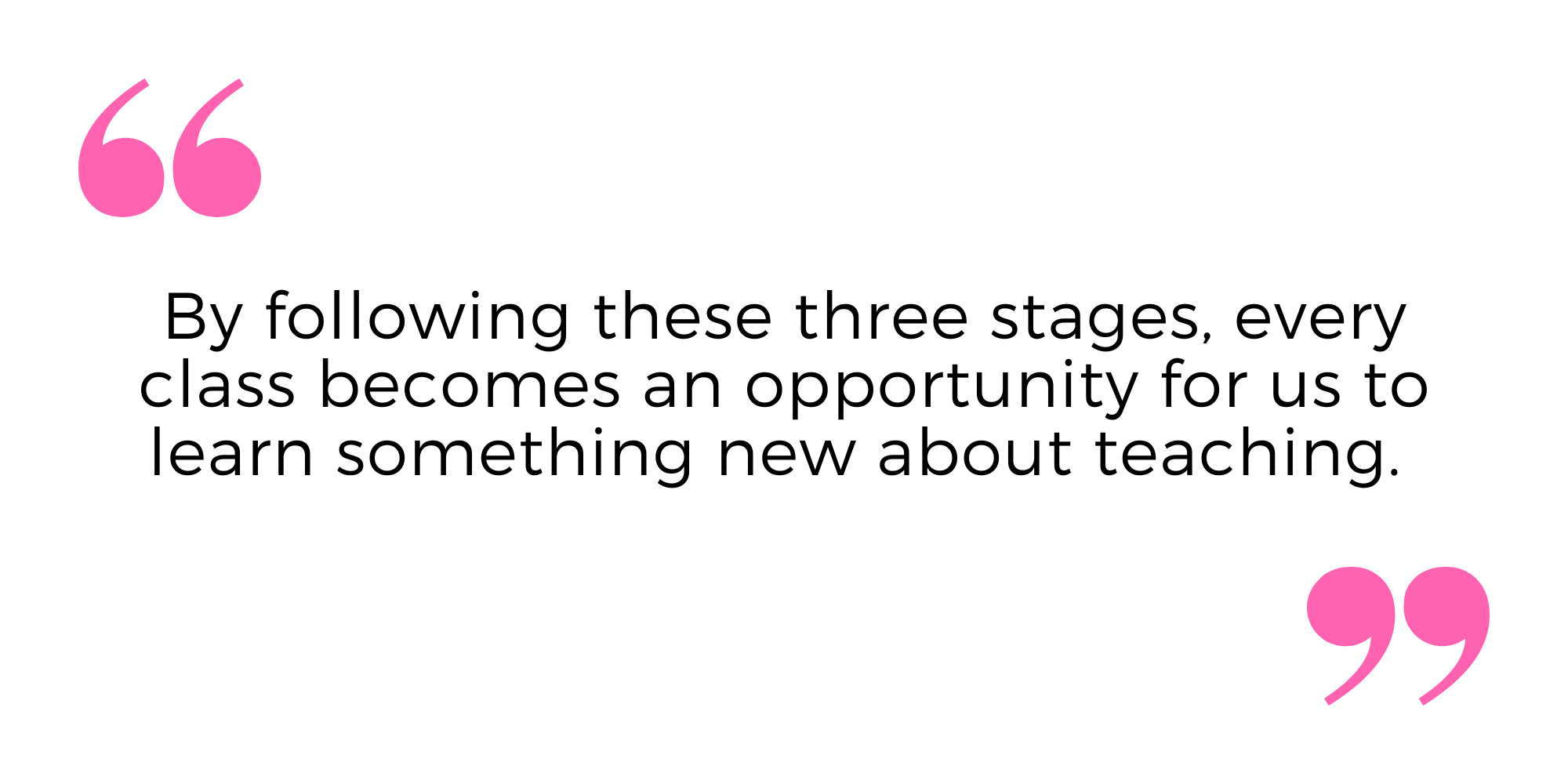Three Steps for Effective Reflection
Reflective practice is often seen as something quite internal and theoretical, but when done effectively, it can be central to affecting teaching practice. Moreover, it empowers us, as teachers, to develop our teaching according to our needs and priorities. In this blog, I will outline a three-step procedure which teachers can follow to reflect in a way which enables them to affect their teaching practice.
The ideas listed here draw on the work of Dewey, Schon and Ward and McCotter. To find out more about how their work informed this procedure, you can listen to the TESOL Pop podcast episode on Learning through Reflective Practice here.
Step 1: Observe to formulate a problem, question or hypothesis
It is important that we investigate and question the effects of our teaching practice. Such investigation allows us to keep the practice which is effective and alter that which is not. Without it, we may continue to use methods which have become outdated or are not appropriate to the context in which we are teaching.
The implementation of this stage could take two forms. You may go into a class with a particular focus in mind. You may have read an interesting blog on error correction or previously noticed that students are making similar errors again and again and have decided that you want to investigate the effects of different error correction techniques. Alternatively, you may notice something during the class that brings a particular issue to the forefront. For example, you may notice that students are not answering your questions and you want to investigate why.
In either case, the observation of students will guide the formulation of your problem, question or hypothesis. Some examples might be:
Students seem to be more receptive to direct error correction.
Why don’t students like peer correction?
My questions don’t seem to have the desired effect.
Some practical ways in which you can record data about students’ in-class activity at this stage include:
Taking notes during or after the class (on paper or by using an online tool such as Google docs).
Videoing your class - make sure you obtain permission to record beforehand
Recording audio notes immediately after the class.
Discussing with an observer, peer, mentor, etc. directly after the class.
Step 2: Get other perspectives
This stage is crucial in the process. Many people have the impression that reflection is a solitary and internal process. It can be done in this way, but if you reflect solely within yourself, you will be stuck with the ideas that you have picked up from sources that may only represent one of several alternative perspectives. To affect real change in our practice, we need to question the methods we use on quite a deep level, and this can be done more effectively by entertaining other perspectives.
Luckily, there are a huge number of sources of other perspectives available. These include:
Colleagues, managers, trainers, mentors, etc.
Videos, podcasts, and Live online events
Books, journals, and articles
Websites, blogs and infographics
Students
This final source is inexplicably under-utilised in teacher development. While a tutor, manager or mentor may have their perspectives on students’ reaction to a particular teaching approach or technique, only students themselves can tell you how these classroom practices affected their understanding, motivation or performance in class.
Step 3: Conclude and formulate questions for further exploration
In steps one and two, we identified a focus and gathered other perspectives. While these stages are very important, it is stage three where we use the information gathered to make a change in our teaching practice.
Similarly to stage one, there are two alternatives. We may draw a conclusion which leads to a concrete change in practice. An example could be: ‘my students don’t like answering closed questions on things that are fairly obvious, so I will use different question types when concept checking to engage and challenge them.’ Alternatively, we may formulate a question which leads to further enquiry. We may, for example, ask: ‘would students react differently to yes/no questions to elicit information compared to similar questions to concept check?’
If choosing the first approach, be careful not to make sweeping conclusions. Just because one student doesn’t like answering a particular type of question, it doesn’t mean all students feel the same. Be ready to re-evaluate any change in practice you make based on any conclusion.
If choosing the second approach, how you word the questions are very important. Try to word them in a way which would lead to experimentation. Some examples could be:
What would happen if I tried X?
What would be the effect of Y on students?
If I try X in the grammar presentation, will Y happen in the free practice?
If I don’t X, which activities will run more or less smoothly?
Some ways in which you can complete this stage are:
Forming a question while you’re lesson planning
Using a mind map to support your thinking process
Sitting quietly with a cup of coffee to formulate your question
Talking to someone about your idea (and possibly sharing how it went after class).
By following these three stages, every class becomes an opportunity for us to learn something new about teaching. A negative student reaction becomes something that starts an investigation rather than something for us to beat ourselves up about. We open up the possibility to investigate issues we otherwise wouldn’t have considered and try out approaches we otherwise wouldn’t have tried. Most importantly, it allows us to change our practice in a useful way.
Given the different ways this can be done, it can also be quite a light undertaking. You may, for example, speak to a colleague after your class and tell them what you noticed about students, they could give you some suggestions of things to try and you could then talk to them again before the class and tell them what you’ve decided to do, based on their suggestions. You may equally draw a mind map after class of the things you noticed, choose one of these you’d like to focus on, read a section of a book on this topic and then draw a second mind map of the things you would like to try in the next lesson.
How you enact this process will depend on your own time, personality, resources available to you and other factors but there is no reason why even the busiest of teachers can’t try it out in some form.
References
Gordon, M and Wilkes, L (2022) TESOL POP: Learning through Reflective Practice. 29th Aug 2022. Available here.
Dewey, J. (1933). How We Think: A Restatement of the Relation of Reflective Thinking to the Educative Process. Boston, MA: D.C. Heath & Co Publishers.
Gordon, M. (2022). ‘On reflection 1: the importance of reflection in teacher training.’ Modern English Teacher, 31 (3), May, 2022
Gordon, M. (2022). ‘On reflection 2: the importance of reflection in teacher training.’ Modern English Teacher, 31 (4), July, 2022
Schon, D.A. (1983) The Reflective Practitioner: How Professionals Think in Action. Basic Books, New York.
Ward, J. R., & McCotter, S.S. (2004). ‘Reflection as a visible outcome for preservice teachers.’ Teaching and Teacher Education, 20, 243-257.




Lecturer and Teacher Trainer Matthew Gordon discusses the important part reflective practice plays in supporting our ongoing learning and development as educators. Matt shares bite-sized strategies to support reflective thinking, as well as tips on how we can get the most from this essential practice.